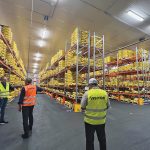
Ratios help tell the financial story on beef farms
Costs of Production: Benchmarks provide evaluations of how costs relate to income

Teamwork from a cow’s perspective
Costs of Production: How are you as a herd manager hitting the salary cap and identifying players that don’t fit?

DNA testing can have value in commercial beef sector
Costs of Production: There are advantages to testing some cows, heifers, bulls and calves

Flipping cow depreciation on its head
Costs of Production: Open cows have a huge effect — especially when they are two-year-olds

The teenage years, beef cow edition
First-calf beef heifers are going through the biggest challenges of their lives and need some support

An EU forage tour shows value of seed science
Farmers should make sure to take advantage of advances in forage varieties

Rethinking yardage costs
Those costs can be higher than most think, so running your own numbers is important

Rethinking ranch priorities
Positivity and profit can be more important priorities than production

Looking at key ranch profit drivers
Beef production is a bit more involved than having cattle eat grass, but putting efforts into management produces the best return

Used mining tires serve as water reservoir
A relatively low-cost system supplies year-round water without freezing

